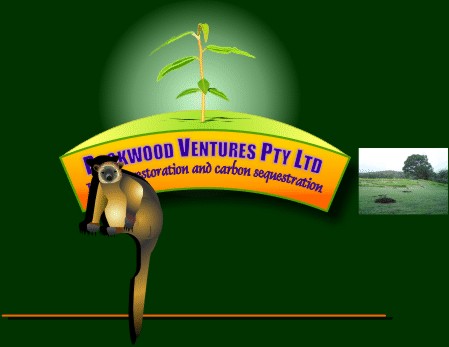
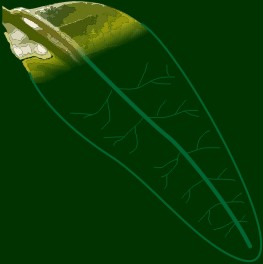
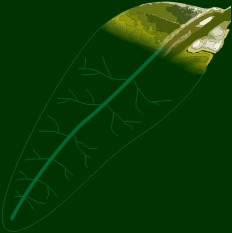
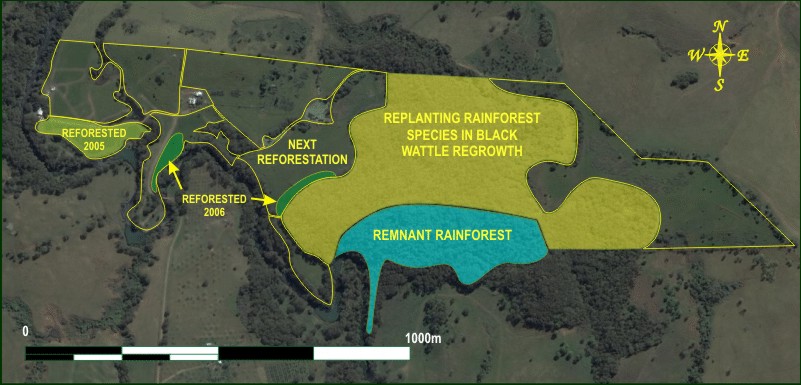

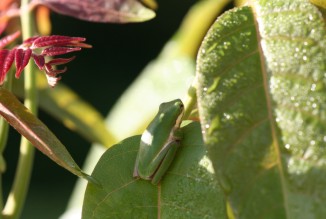
If genocide — the crime of eradicating a race — is for us intolerable; how then should we view the eradication of entire species? Far North Queensland's Wet Tropics World Heritage Area hosts Australia's richest biodiversity. Consequently, with the increased exposure of fragile species to the effects of land clearing and anthropogenic (human-accelerated) climate change, it also hosts extremely high rates of species extinction and population decline. The human-accelerated global warming train has left the station and some species are therefore doomed to extinction, but for others, hope lies in boosting their numbers and their range by restoring habitat, thereby providing a buffer for the literal and metaphorical storms ahead. If we continue to simultaneously alter climate and reduce habitat to a mere archipelago in a sea of agriculture, then the fate of many species will be sealed. When you spook an elusive Lumholtz tree kangaroo or green ringtail possum from cover on the property, you are at once glad of the contact, yet sorry that there is nowhere left for them to hide. 300 Meters further on, they will come to the edge of the rainforest pocket and be confronted by an un-crossable ocean of barren farmland. Our dream is to demonstrate to others that habitat restoration is not only ethically essential, but commercially viable, and thereby spark an industry that rebuilds habitat corridors and sanctuaries throughout the region, and perhaps throughout the world
The satellite photo image below shows the areas of the ecotourism property where our research plantings are located. The paddock that was planted out in 2005 and 2006 are shown in green. We have also commenced planting pioneer rainforest species in the black wattle regrowth (shown in yellow). The black wattle has a short life-span (~15 years) and is a relatively short tree. The red cedars (Toona ciliata) that we have planted along with other species can live for up to 500 years. We have also planted blue quondong (Elaeocarpus grandis) in this area, a fast growing rainforest species that provides excellent food for tree kangaroos and cassowaries among other endangered species endemic to the region.
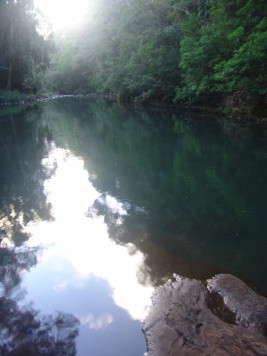
Habitat for Platypus and the Johnstone River Tortoise on Johnstone River
A Northern Dwarf tree frog (Litoria bicolor) makes a home in the canopy of one of our red cedar
“...Today, we’ve quickened the pace of extinction to a level never seen before. In tropical rainforests alone, for example, we’re eliminating, at a very conservative estimate, about 25,000 entire species every year....”
David Suzuki
“Naked Ape to Superspecies”, 1999














